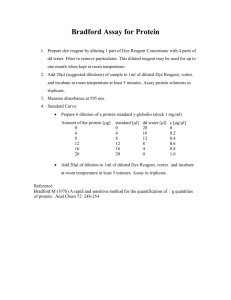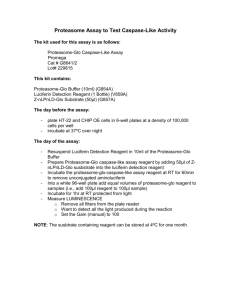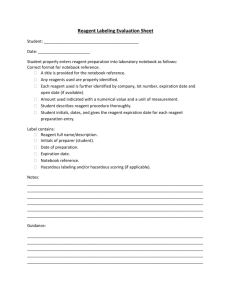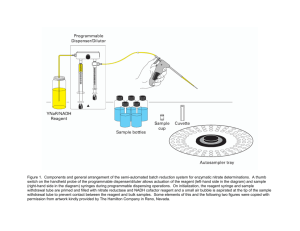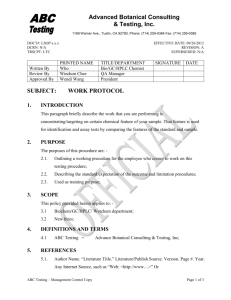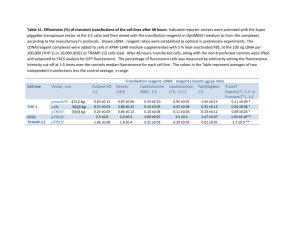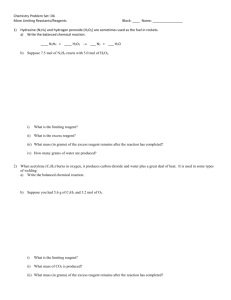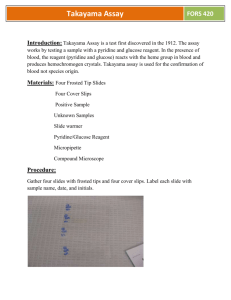96 Well: Counting Cells
advertisement
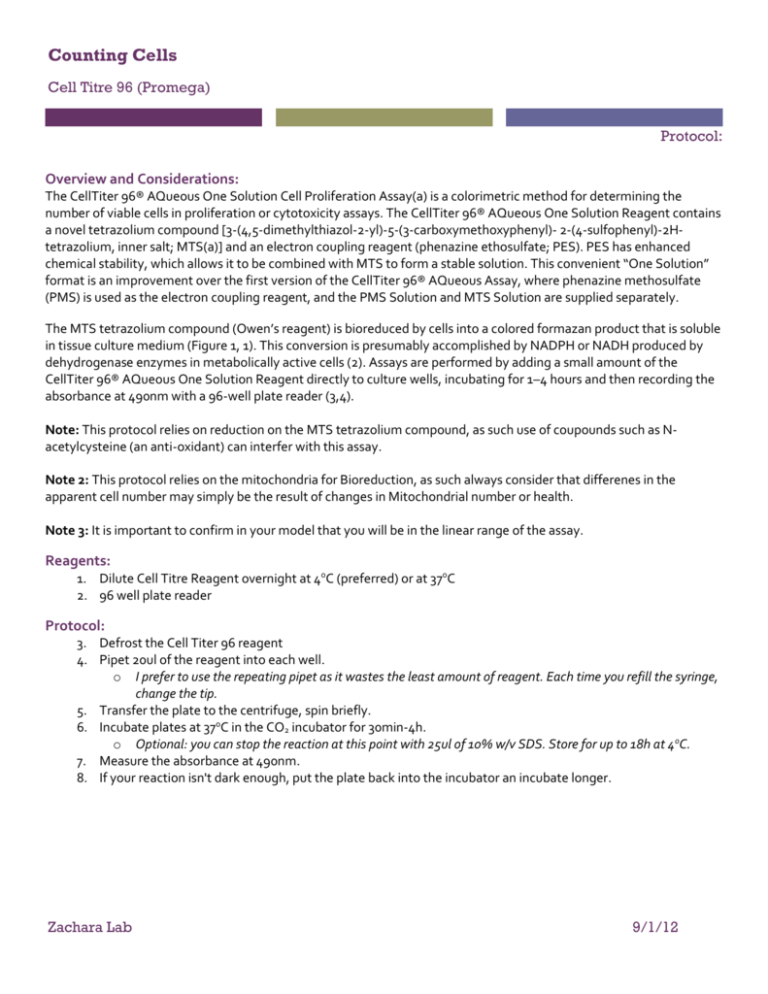
Counting Cells Cell Titre 96 (Promega) Protocol: Overview and Considerations: The CellTiter 96® AQueous One Solution Cell Proliferation Assay(a) is a colorimetric method for determining the number of viable cells in proliferation or cytotoxicity assays. The CellTiter 96® AQueous One Solution Reagent contains a novel tetrazolium compound [3-(4,5-dimethylthiazol-2-yl)-5-(3-carboxymethoxyphenyl)- 2-(4-sulfophenyl)-2Htetrazolium, inner salt; MTS(a)] and an electron coupling reagent (phenazine ethosulfate; PES). PES has enhanced chemical stability, which allows it to be combined with MTS to form a stable solution. This convenient “One Solution” format is an improvement over the first version of the CellTiter 96® AQueous Assay, where phenazine methosulfate (PMS) is used as the electron coupling reagent, and the PMS Solution and MTS Solution are supplied separately. The MTS tetrazolium compound (Owen’s reagent) is bioreduced by cells into a colored formazan product that is soluble in tissue culture medium (Figure 1, 1). This conversion is presumably accomplished by NADPH or NADH produced by dehydrogenase enzymes in metabolically active cells (2). Assays are performed by adding a small amount of the CellTiter 96® AQueous One Solution Reagent directly to culture wells, incubating for 1–4 hours and then recording the absorbance at 490nm with a 96-well plate reader (3,4). Note: This protocol relies on reduction on the MTS tetrazolium compound, as such use of coupounds such as Nacetylcysteine (an anti-oxidant) can interfer with this assay. Note 2: This protocol relies on the mitochondria for Bioreduction, as such always consider that differenes in the apparent cell number may simply be the result of changes in Mitochondrial number or health. Note 3: It is important to confirm in your model that you will be in the linear range of the assay. Reagents: 1. Dilute Cell Titre Reagent overnight at 4oC (preferred) or at 37oC 2. 96 well plate reader Protocol: 3. Defrost the Cell Titer 96 reagent 4. Pipet 20ul of the reagent into each well. o I prefer to use the repeating pipet as it wastes the least amount of reagent. Each time you refill the syringe, change the tip. 5. Transfer the plate to the centrifuge, spin briefly. 6. Incubate plates at 37oC in the CO2 incubator for 30min-4h. o Optional: you can stop the reaction at this point with 25ul of 10% w/v SDS. Store for up to 18h at 4oC. 7. Measure the absorbance at 490nm. 8. If your reaction isn't dark enough, put the plate back into the incubator an incubate longer. Zachara Lab 9/1/12

